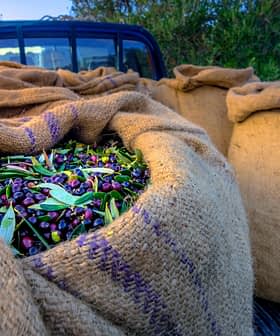Sunflower oil sales have overtaken olive oil sales in Spain for the first time.
According to data from the National Association of Edible Oil Bottlers and Refiners Industrialists (Anierac), olive oil sales dropped from 134,000 tons in October 2023 to 110,477 tons in March 2024, a 17.5 percent decrease.
Conversely, sunflower oil sales increased by 24.5 percent over the same period, rising from 127,400 tons to 158,574 tons.
See Also:Spanish Olive Oil Production Continues to Beat ExpectationsOfficials in Spain point to below-average production across much of the olive oil world for a second consecutive year, combined with historically high olive oil prices, as the main reasons for falling consumption.
Data from NielsenIQ, a market research firm, show that olive oil prices at retail rose by 61 percent from May 2023 to May 2024, reaching an average of €7.41 per liter. Prices for virgin and extra virgin olive oil rose similarly, reaching €8.92 and €7.77 per liter, respectively.
At the same time, sunflower oil prices at retail have fallen by 35 percent over the same period, dropping to €1.56 per liter.
In its 2023 home consumption report, the Ministry of Agriculture, Fisheries and Food said Spanish households reduced edible oil consumption by 3.3 percent in 2023.
Ministry data show that olive oil consumption fell by nearly 15 percent in 2023, while sunflower oil consumption increased. Demand for olive pomace oil, the price of which rose by a far more modest 23 percent, more than doubled.
Despite olive oil losing ground to other edible oils, agriculture minister Luis Planas said the Mediterranean diet continues to be the basis of the Spanish diet.
“In Spain, the world’s leading producer of olive oil, per capita consumption of total olive oil exceeds six liters per person, while in the world, this consumption is barely 0.41 liters,” the ministry wrote in a press release.
The report also found that Spaniards continued to prepare dishes with meat, vegetables, eggs and fish at home, with increased consumption of legumes.
“Fresh foods, especially dairy products, fruits and vegetables, account for 37.6 percent by volume of household diets,” the ministry wrote. “Spaniards prioritize health, flavor and simplicity in preparations, as demonstrated by their preference for green salads and grilled preparations.”
Overall, olive oil sector observers and participants expect this trend to reverse as the 2024/25 crop year begins in October.
Above-average rainfall across the country’s most prolific olive oil-producing regions combined with the absence of temperature shocks during the blossoming has some producers cautiously optimistic that production will return to normal.
Spain produced an average of 1.4 million tons annually in the five years before the historically low harvest of 2022/23. If production returns to normal, prices would be expected to stabilize between €3 and €4 per kilogram at origin, about half of what they are now.
As a result, olive oil sector observers believe that demand will recover quickly since many consumers have changed their olive oil consumption habits — such as buying smaller formats and lower-quality grades — without abandoning the category altogether.
“There is insufficient olive oil available to cover demand,” Juan Vilar, a strategic consultant, told Olive Oil Times in a January interview. “But the demand has not fallen much… People don’t want to leave the olive oil category.”









